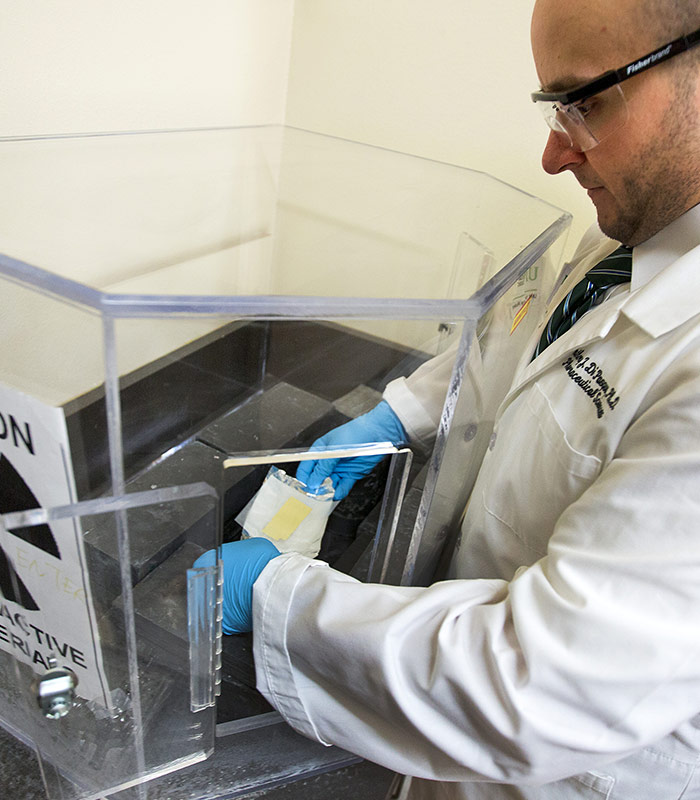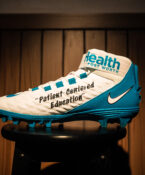A bandage to treat skin cancer
 Sun lovers are bombarded daily by warnings about the cancer dangers posed by their passion.
Sun lovers are bombarded daily by warnings about the cancer dangers posed by their passion.
But researchers now are offering hope to patients with skin cancer that they could be treated one day with a radioactive bandage containing exactly the right dosage to shrink tumor lesions.
Researchers say such a bandage s could be used as an alternative or complement to external beam radiation and surgery.
The bandage easily could be adjusted to fit the size and position of the tumor lesion and would make it possible to treat skin cancer without harming healthy tissue, said Anthony Di Pasqua, PhD, Assistant Professor of Pharmaceutical Sciences at UNT Health Science Center.
“We know that such a bandage can be used to shrink tumors,” he said. “But the goal is to use a much lower dosage of radiation than what patients are exposed to now.”
Radiation therapy uses a beam of electrons that only penetrates as far as the skin. It is sometimes used to treat squamous and basal cell carcinoma, which affects more than 3.5 million people in the United States.
Radioactive skin bandages have not been tested in human clinical trials. Dr. Di Pasqua and his colleague, Kenneth J. Balkus, PhD, at UT Dallas, hope to publish preliminary results of their research this winter.
Dr. Di Pasqua said that the bandage streamlines treatment and ensures that the patient receives a therapeutic dosage. It is composed of holmium-containing nanoparticles that become radioactive upon bombardment by neurons.
By using short-lived isotopes, the bandage is no longer radioactive after 11 days, Dr. Di Pasqua said. During treatment, bandaged patients would be confined to an outpatient clinic, where a lead shield would prevent others from being exposed to radiation. Radioactive sensitizers make it possible to use lower doses of radiation than are normally given in hospitals or clinics.
The length of time the patient would be exposed to radiation would be calculated down to the second.
In some patients, a single dose of radiation may be enough to shrink a tumor, but others may require multiple doses.
“Being able to actually apply it to the skin is quite an elegant solution to this type of cancer,” he said.






Social media